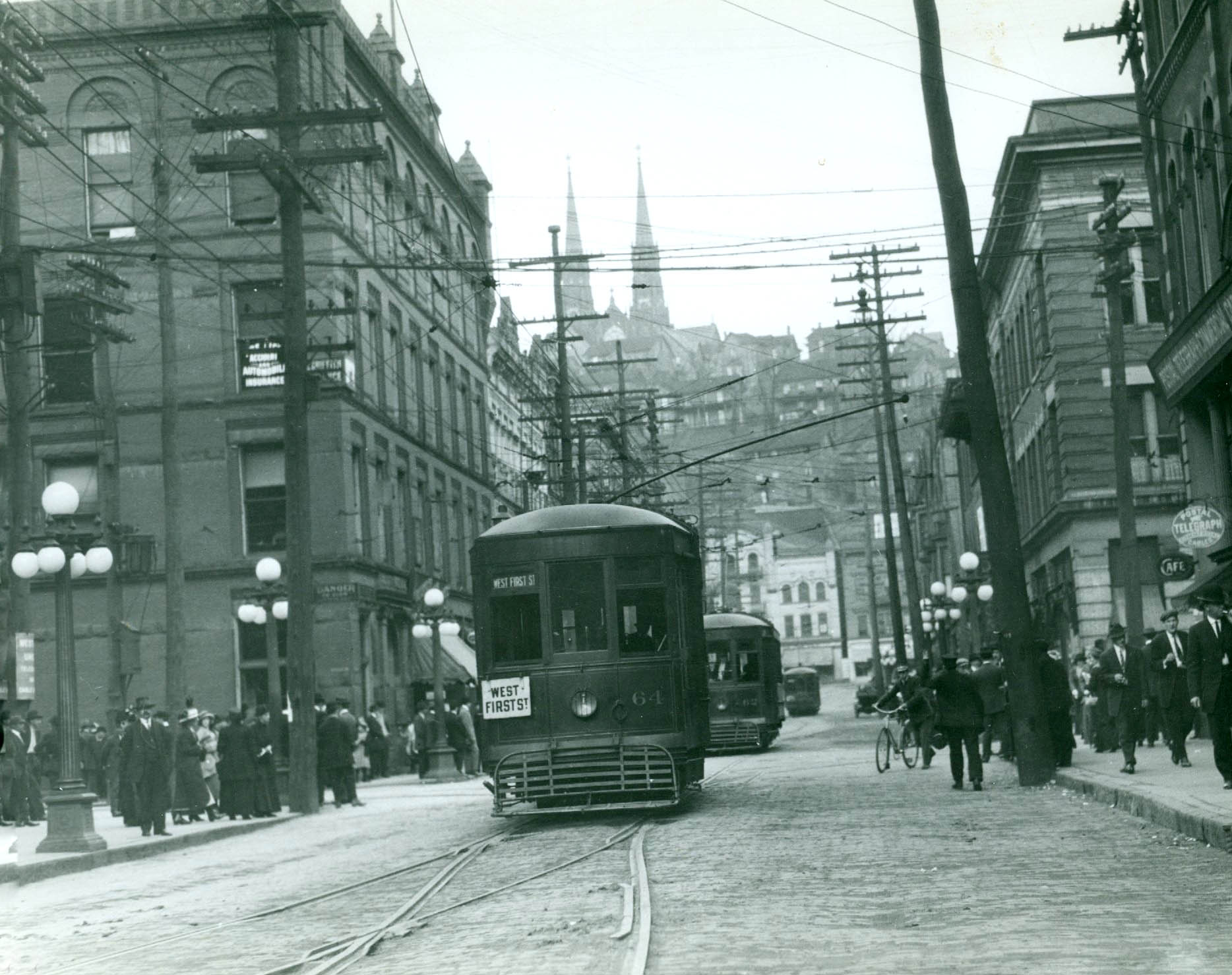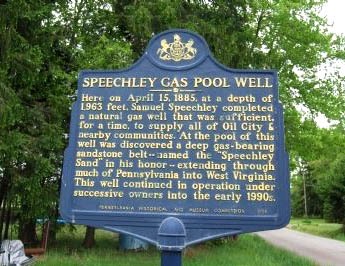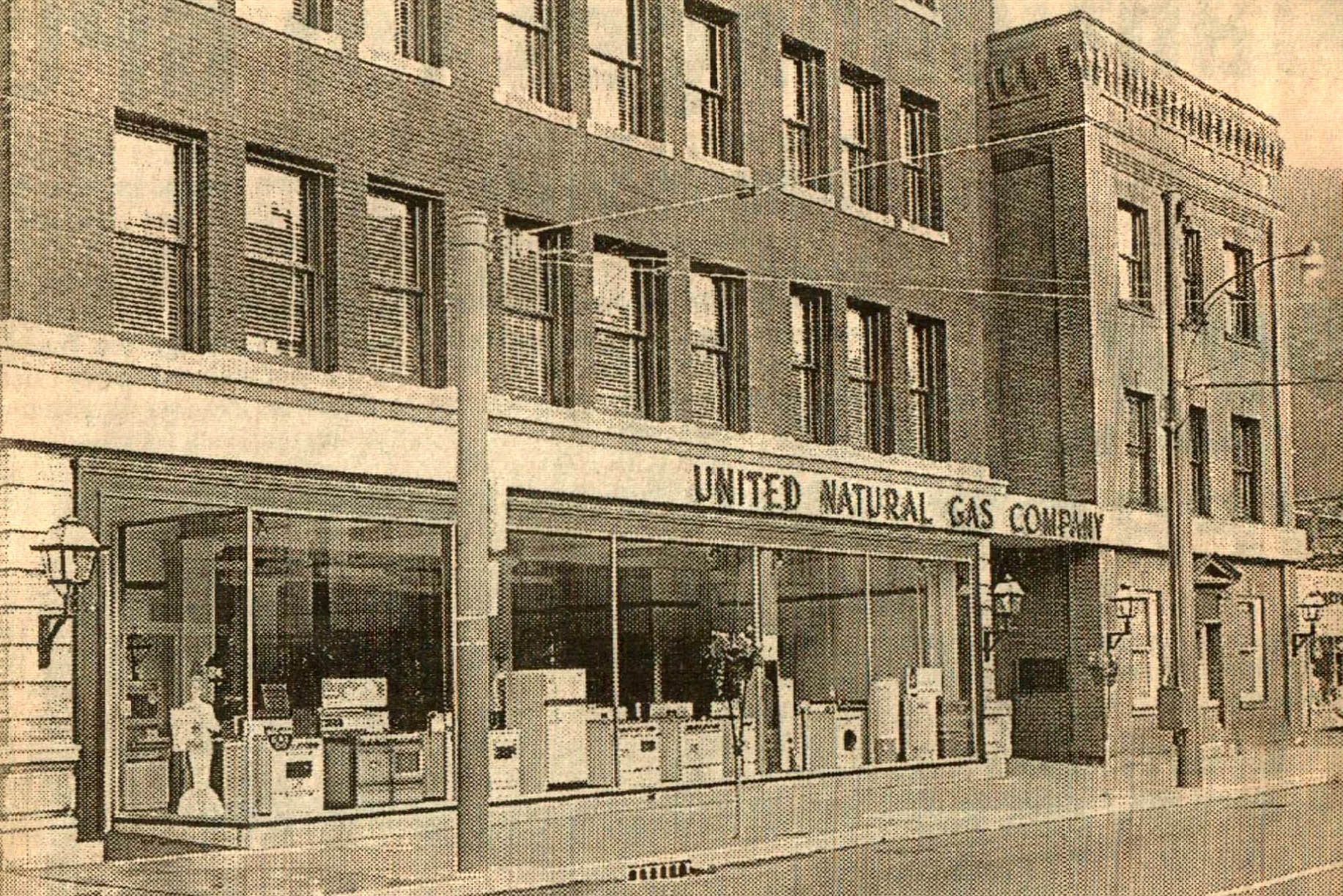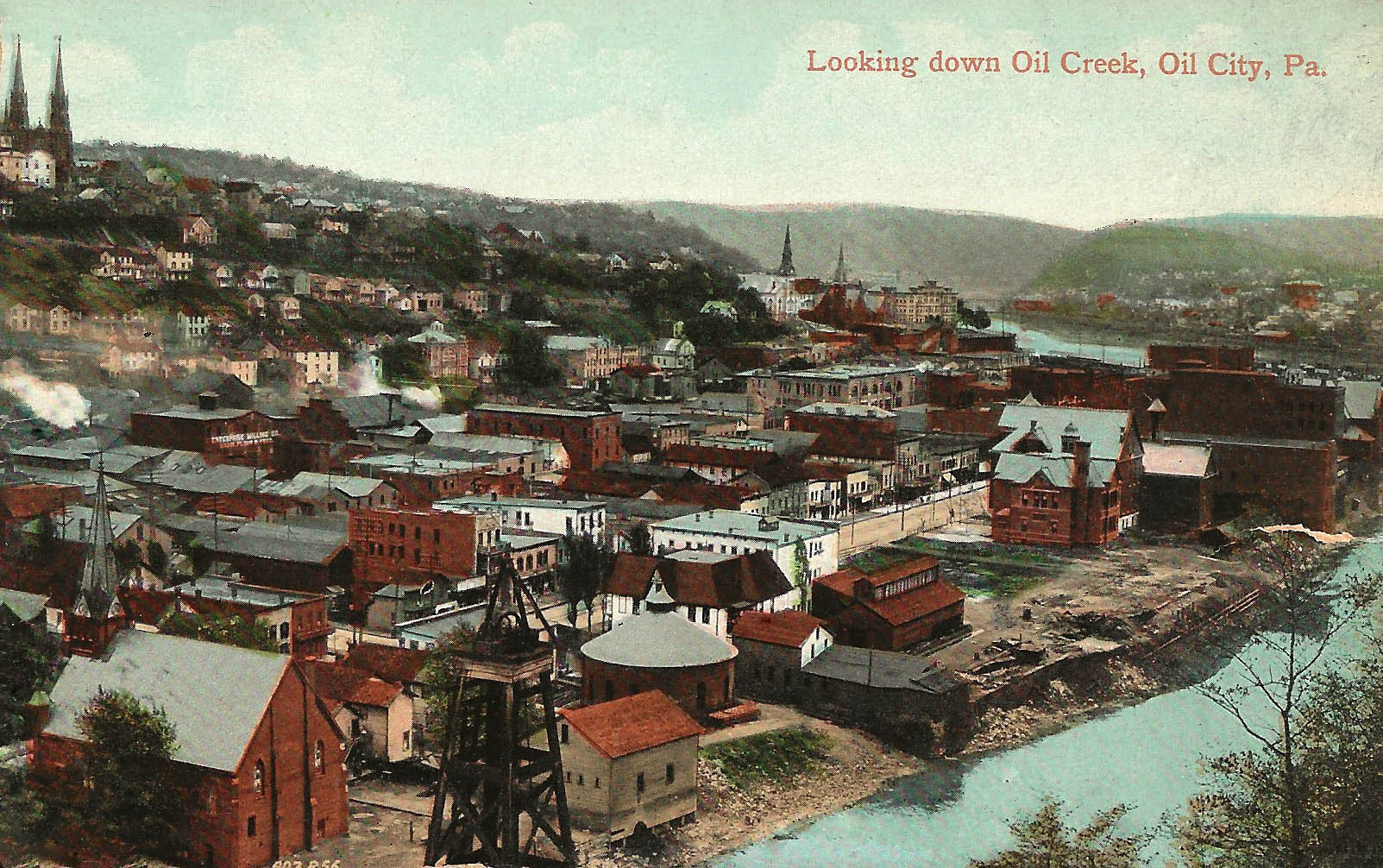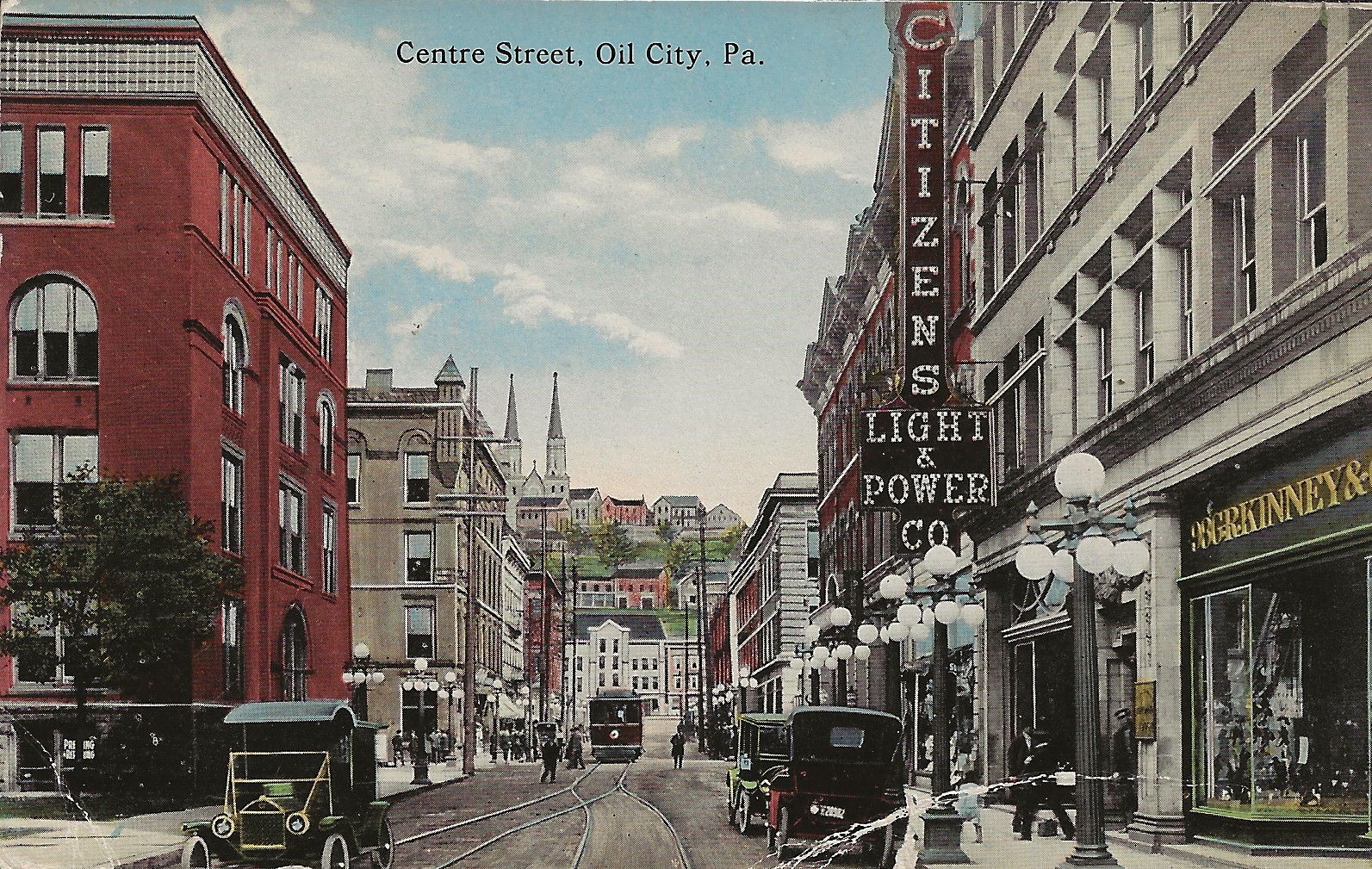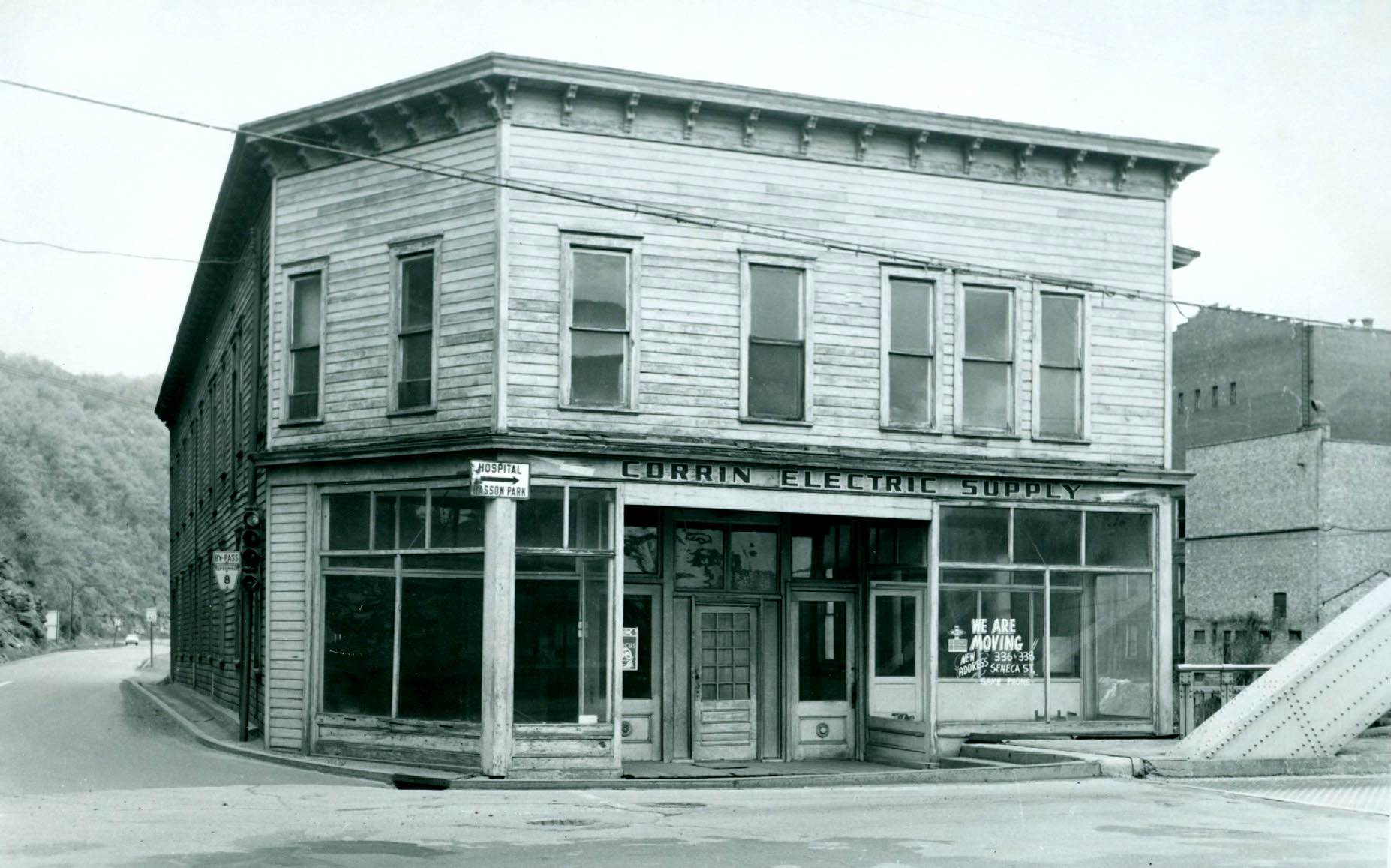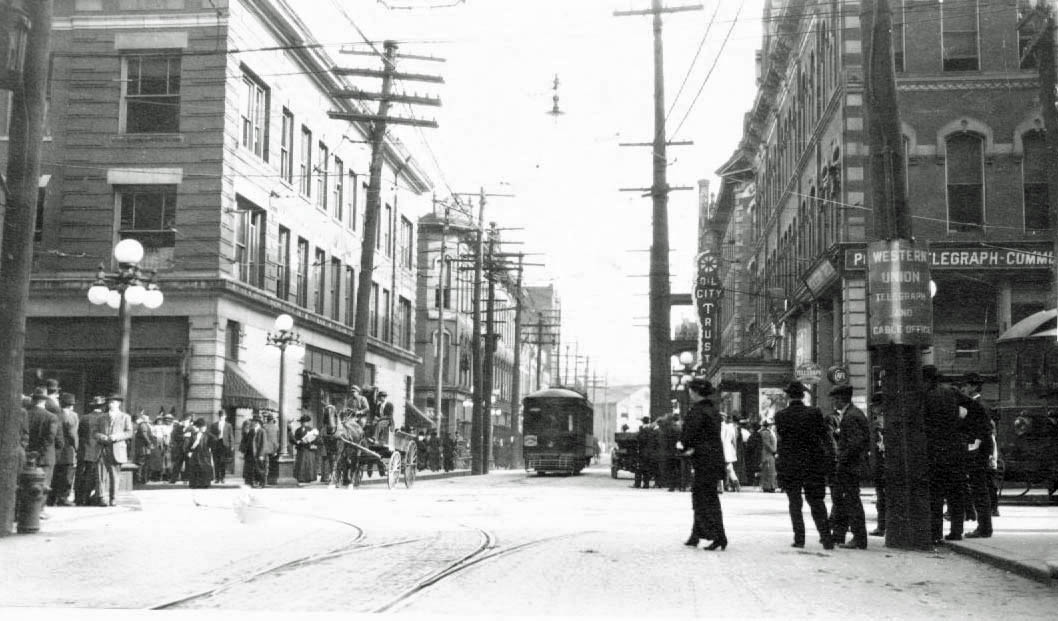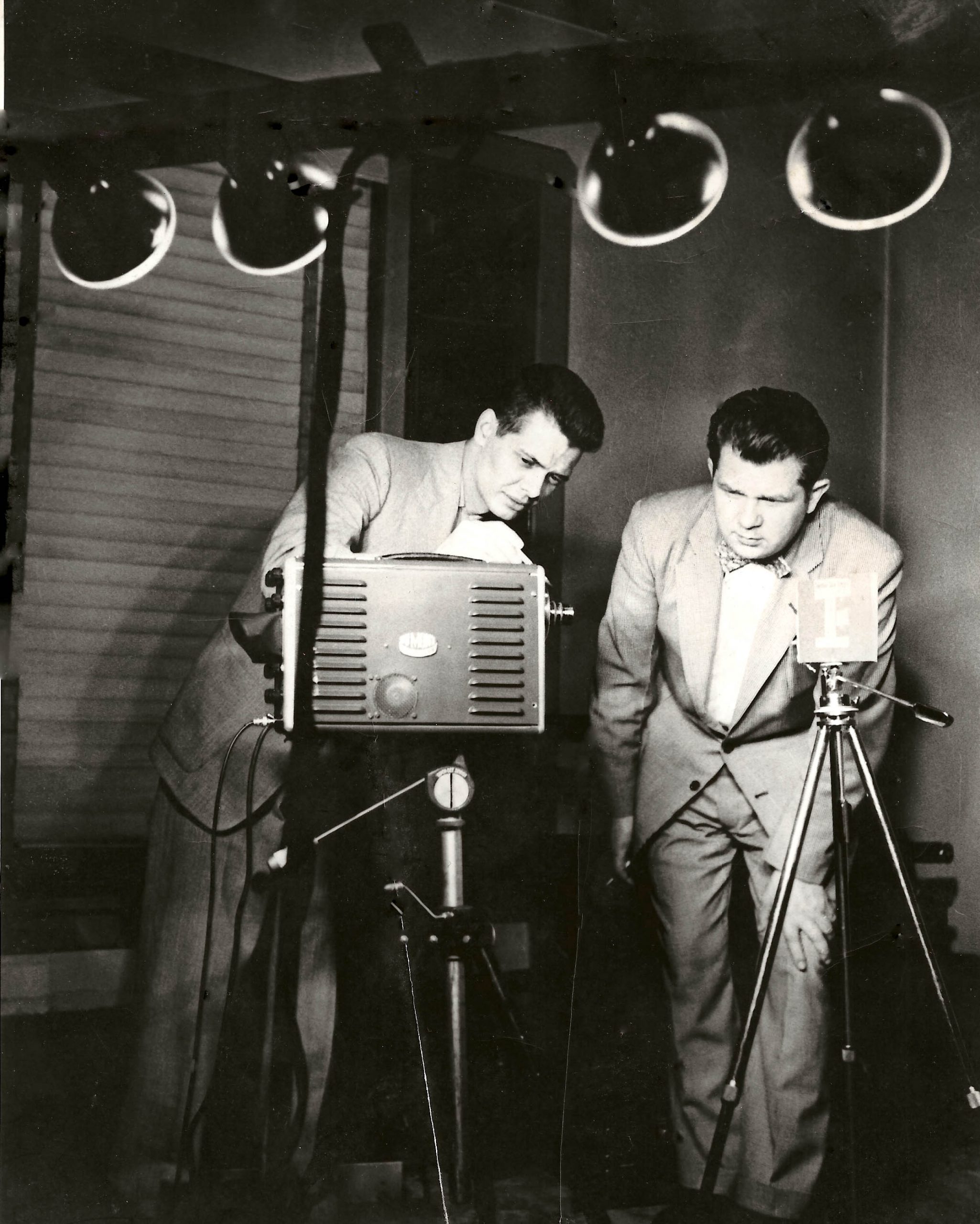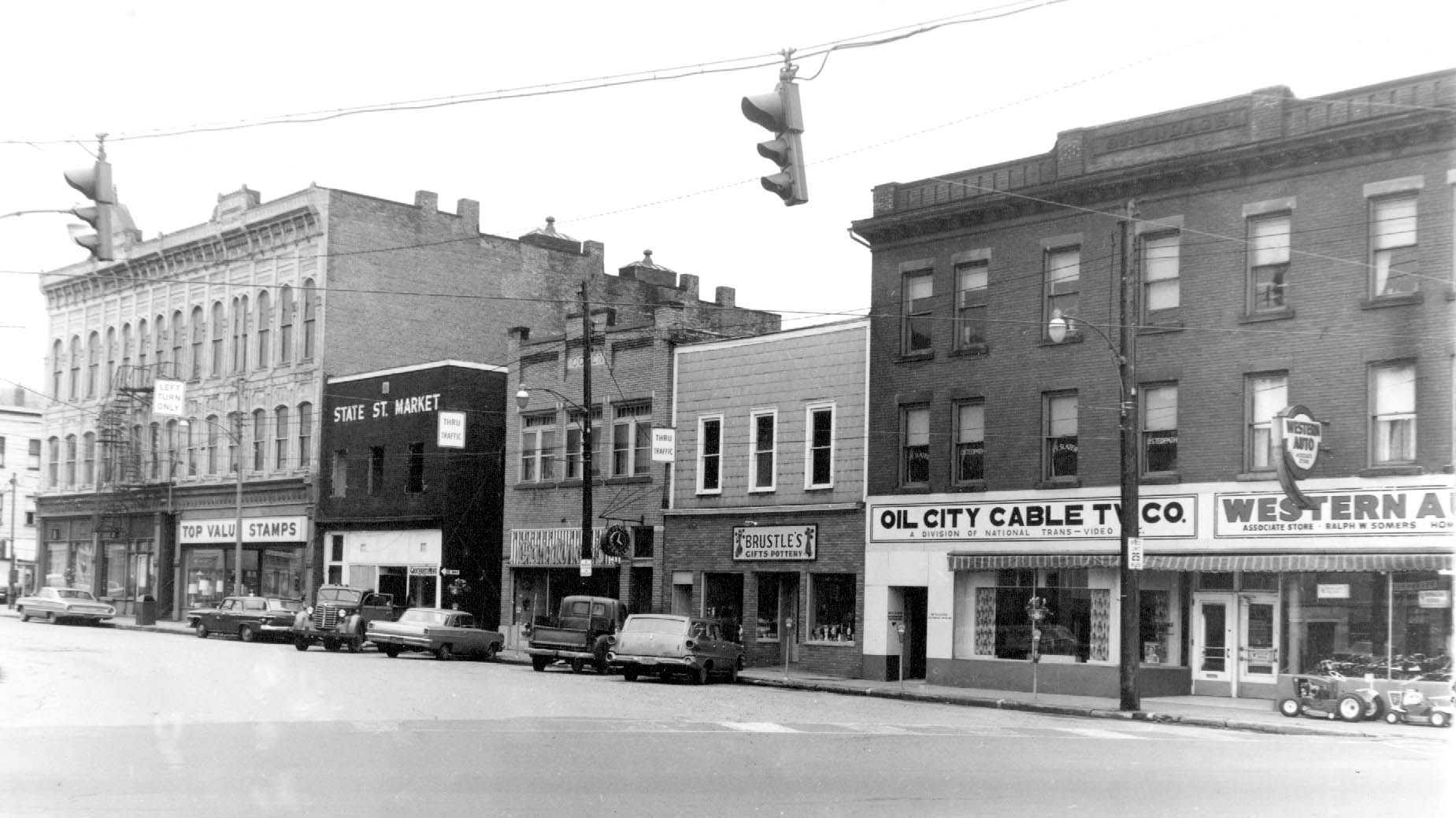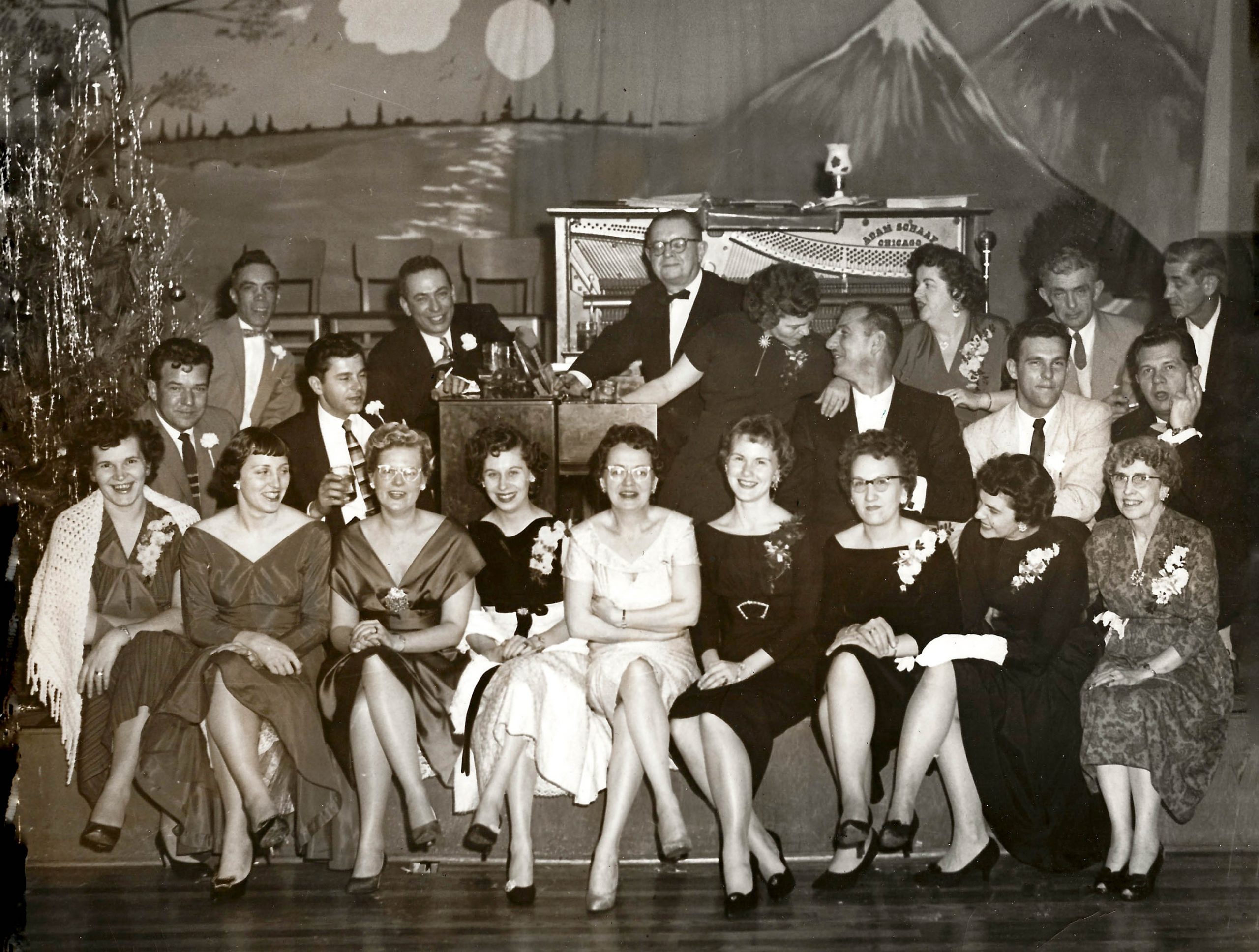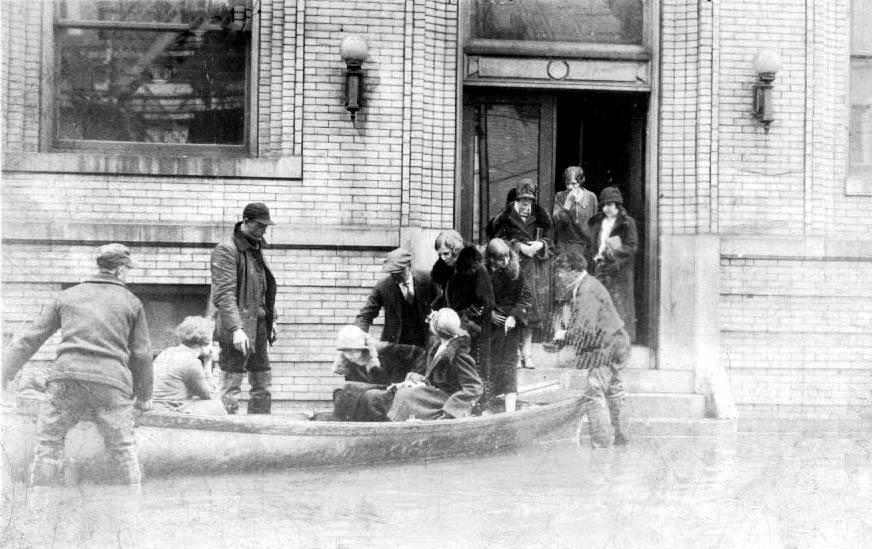Utilities
- Judy Etzel
- July 21, 2023
- Hidden Heritage
- 14525
Oil City’s sizzling hustle and bustle as a result of the region’s early petroleum industry drew conveniences unheard of in similar small communities throughout the U.S. – public utilities.
Residents and businesses throughout the city, as well as outlying areas, would benefit from natural gas energy lines, telephone and telegraph services, electricity and television cable long before such utilities were available elsewhere.
All of it stemmed from the needs of a rapidly growing industrial base, a proliferation of small and mid-sized businesses and a booming population.
Natural Gas
In 1825, the first successful natural gas well was drilled in Fredonia, NY, and the production fueled lighting in the town. Development of the gas industry was slow over the years as producers invented ways to harness the fuel. Until the 1870s, natural gas was simply “flared,” or let loose, as a waste product at the oil well. Its only purpose was to provide the pressure to bring the oil to the surface.
In 1876, local gas producers formed the Oil City Gas Co. with the primary objective being to provide fuel for illumination. The name was changed to Oil City Fuel Supply Co. five years later. It grew quickly due to the merger of several small gas companies. In 1911, the conglomerate was declared a monopoly and the federal government ordered it disbanded as part of the Standard Oil dissolution. The gas company’s first four CEOs were former Standard Oil executives.
What emerged from the trust-busting was the United Natural Gas Co. which was headquartered in Oil City. The red brick office building was constructed in 1914-15 on Seneca Street. The building boasted a WonderFlame Hall on the ground floor where a variety of natural gas appliances were demonstrated and displayed for sale.
The company would become part of National Fuel Gas in 1974 and the headquarters would shift from Oil City to Buffalo, NY.
A key element in the local gas company’s success was a record-setting natural gas well drilled in Venango County. Samuel Speechley, a native of the Oil Valley, was looking to drill for oil near the village of Coal Hill in Pinegrove Township when, at a depth of 1,925 feet on April 13, 1885, he hit a huge gas pocket. The production was so enormous that the well gave its name to the Speechley Sand, one of the most prolific gas-bearing sands in the U.S. It was a 20-to-25-mile long underground gas-bearing sand and its very large reservoir is continuing to produce natural gas.
It prompted a dramatic expansion of natural gas field exploration throughout the oil region as well as a surging public demand for natural gas services. Compressor stations to pump pipelined natural gas into communities were built at the Van, Hampton (Pinegrove) and Henderson (Mineral) stations.
The Speechley Well provided natural gas directly to Oil City, Franklin, Titusville and surrounding areas via a pipeline system built in the early 1890s.
One of Oil City’s most familiar landmarks was a large, cylinder-shaped tank at the rear of the company’s headquarters on Seneca Street. It was called a gas holder – natural gas was piped into the holder during the daytime when there was little demand for it so there would be ample supply and pressure when the street lights were lighted in downtown Oil City every night. It was converted into a warehouse in 1890 when the city’s gas line infrastructure was expanded. It later became a testing lab for new gas appliances that were available for sale to the public. The structure was demolished in 1963.
The nation’s natural gas utility presence traces its roots to Oil City, home of one of the oldest systems as well as the early leader in pioneering inventions to serve the industry.
One of the gas company’s advertisements read: “Do you know that: while the banks close for the holiday, while the stores shut shop for Sunday, while the grocer says ‘we have some ordered,’ while the coal man tells you to wait, while the merchant moves to another town, while the labor in other industries is on strike, while the manufacturer goes out of business – the United Natural Gas Co. keeps right on serving natural gas to the public, rich and poor alike. 365 days, 8,766 hours a year. This is real service! Use gas, but don’t waste it.”
Electricity
Electric power first came to Oil City in November 1893 when an electric-powered railway began operations throughout the city. Oil City had an electric streetcar, or trolley, service many years before larger cities did.
In late 1880, Oil City Council granted the right to build and operate the trolley system in the city to John Smithman. It debuted on Thanksgiving Day 1893. In 1901, competitor Daniel Geary of Oil City, founder of Citizens Traction Co., bought out Smithman’s company.
In addition to the railway, the businessman and his partners, including Stanley Loomis and William J. Breene, incorporated the Oil City Electric Company. J.H. Payne was named manager.
There were two types of electric service available – outdoor arc lights that could burn all night at $10 a month and incandescent indoor lights which could burn from 2 until 10 pm at $2.50 per month.
In 1900, Citizens Light and Power Co. bought the Oil City Electric Co. at a sheriff’s sale and soon built a coal-powered generating station in the city’s West End. The company headquarters at 13 Center Street handled electric service customers as well as sold electric appliances.
The local newspaper encouraged residents to “modernize” their homes in 1913 by signing up with Citizens Light and Power, advertised as “the home of the matchless light”, by having their homes wired for electricity. The utility offered to pay contractors to do the wiring work and then would bill the customer on an easy payment plan. Two key contractors were W.H. Young of 5 Central Ave. and W.H. Corrin of 212 Center St.
By the end of 1952, Citizens Light and Power had 6,312 customers in the city. The company eventually became known as Keystone Public Service until 1943 when it merged with Penelec, a company organized in 1919 through the merger of several smaller electric companies.
Penelec chose Oil City as its northern tier division headquarters and built a new office structure in 1968 in the West End.
Telegraph
The telegraph system was vital in the oil and gas patch because it provided a communication system to individuals and businesses needing answers quickly about land acquisition, drilling plans, oil and gas pricing, barrel inventories, rail shipping and more.
The telegraph lines generally followed the rights of way for pipelines and poles were set accordingly.
The city’s Oil Exchange, which relied extensively on telegraph services, was the location for the city’s telegraph office. Western Union, the provider, set up shop on the first floor of the exchange, located at Center and Seneca Streets, in 1878.
The office moved in the 1940s to the National Transit Building where it remained until the local service was discontinued in January 2006. It was the National Transit Company, a major pipeline and oil production company, that relied exclusively on the telegraph system to send coded messages throughout the region.
The company had separate books with code words for oil production, new drilling and more to “ensure and maintain the secrecy as the oil scouts did their work,” noted the company.
Television
Oil City residents had cable television service to them by the early 1950s. The Oil City Television Cable Co. was located on the ground floor of the Brundage Building at 4 State Street.
A display of televisions, all turned on, lit up the front windows and prompted the familiar description of the site as “The Television Building.”
The company also broadcast locally produced segments with a studio and array of cameras available for use. In the 1950s, Ned W. Cogswell was the president and commercial manager for the business.
By the 1960s, Frank Drelick was serving as manager for a company that advertised itself as “the community antenna system.” Marie Master later was named office manager.
Flat cable lines were strung throughout the community with customers’ lines extending from poles along the street to couplers attached to the houses.
In 1974, the Sammons Company purchased the local cable company.
Telephones
The launch of telephone service in Oil City was in 1878 and it was for a private line for J.J. Vandergrift, an oilman. One year later, a second line was set up for W.J. Brundred. The provider was the Pittsburgh-based Central District & Printing Telegraph Co., an agent for electric phones in parts of Pennsylvania, Ohio and West Virginia.
In 1881, a telephone central office was set up in the Oil City Trust Co. building, lit by oil lamps and heated by a pot-bellied stove. Frank Ross, the superintendent, was in charge of installing lines as well as manning a switchboard. One year later, the city telephone directory listed 72 subscribers. A decade later, that number swelled to more than 500 for Oil City and Franklin.
A second telephone company, the Petroleum Exchange, opened for business in 1901 to link Oil City, Titusville and Pleasantville. A key factor in expanding the service into the rural areas was the need to serve the oil industry and connect lease owners with producers. Subscribers could choose from four styles of phones: candlestick phone, wooden wall phone, cabinet desk type or a soundproof wooden booth complete with phone and desk. Directions on how to use the system included: to call the central office, turn the crank with a brisk steady motion; when the conversation ends, hang the receiving telephone on the hook and turn the crank to notify the office you are through. And, warned the company, it would not tolerate “unnecessary conversation or singing on the lines as they will seriously interfere with the speedy handling of business.” Also, subscribers were advised to not worry about temperamental phones: “pay no attention to the irregular ringing of your bell,” noted the company’s phone directory.
Early newspaper accounts note the two competing telephone systems “left the city in a confusing, somewhat amusing, dilemma.”
“Families who were good friends sometimes could not talk by phone if they subscribed to different companies. Some residents, and many businesses, solved the problem by installing both services – then all they had to figure out was which phone was ringing.”
In 1924, Central was sold to the Petroleum Exchange Co. and the sale resulted in a single integrated telephone system for the city. Over the next several years, the Petroleum Exchange consolidated with other phone companies and eventually became part of the GTE Corp. The Oil City phone offices were located in the Smart and Silberberg’s department store (later Armstrong-Colliers). A fire destroyed all the exchange equipment and the company opted to build a new structure on Sycamore Street.
Written by Judy Etzel with research by Kay Dawson and design by Natalie Cubbon.
HIDDEN HERITAGE IS SPONSORED BY:
Helen & Dave Heinzer
Support This Project
Donations to the library are appreciated to help offset printing costs & make this project possible! Want to become a sponsor? Email us at promotions@oilregionlibraries.org to get started!
Make a Donation
